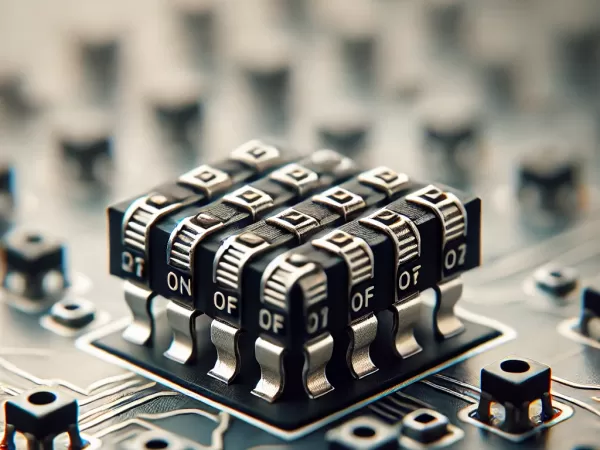"DIP Switches vs Digital Switches: Why Physical Switches Still Matter?"

With the rapid development of electronic devices, digital switches and software configurations are increasingly used to manage various functional configurations of systems. However, **DIP switches**, a simple physical component, still plays an important role in many applications. This article will explore the differences between physical DIP switches and digital switches, and analyze why physical switches are still indispensable in some situations.
Dip Switch vs Digital Switch: Basic Differences
DIP switch: reliable physical switch A DIP switch is a physical switch that controls a circuit manually, usually for binary configuration. Users can change the state of the device by flipping the switch to control the function or operation mode. The DIP switch does not require software support and relies only on mechanical contacts to switch the "on" or "off" state, which makes it outstanding in reliability and stability.
Digital switch: Software-dependent configuration Digital switches usually refer to switching the state of a device through electronic signals or software programming. The device selects and configures functions through firmware or software, reducing dependence on physical components, providing more flexible operation and higher integration.
Typical application scenarios of DIP switches
- Industrial equipment : Factory automation equipment and mechanical controllers often use dip switches to set communication parameters, function selection, etc. to avoid the impact of electronic noise on the equipment.
- Embedded systems : In embedded development, dip switches are used to select the system's operating mode or address encoding, ensuring flexibility and efficiency during the development process.
- Consumer electronics : Dip switches are commonly found in simple electronic devices such as remote controls, air conditioners or washing machines, helping users set different operating modes.
Advantages of digital switches
Although DIP switches have their own unique advantages, digital switches are more suitable in some scenarios. Their main advantages include:
- High flexibility : Digital switches can change configuration dynamically through software without physical operation.
- High integration : Digital switches can be highly integrated with other electronic components, saving circuit board space and suitable for modern miniaturized devices.
- Remote control : Through digital signals, the status of the switch can be controlled through the network or remote devices, suitable for smart devices and Internet of Things (IoT) devices that need to be remotely managed.
Although digital switches and software configuration are widely used in modern devices, physical DIP switches still play an important role in many occasions. Its stability, low cost, simple operation and reliable performance in harsh environments make it an ideal choice for many industrial equipment, embedded systems and consumer electronics. When choosing a configuration method, design engineers need to weigh the advantages and disadvantages of physical switches and digital switches according to the specific needs of the application scenario to make the best choice.
Physical dip switches may not be completely replaced, but with the support of modern technology, their combination with digital switches is providing engineers with more diverse solutions.